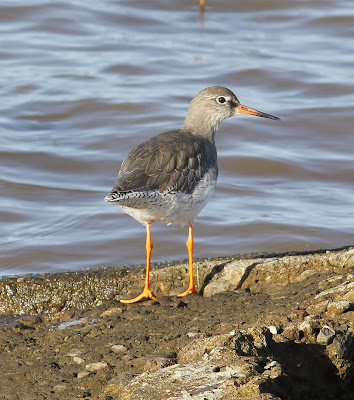I did the usual circuit this morning and it looked like being a repeat of Thursday’s effort, bright early on with the threat of rain for later. It was a rerun - its 2pm and the rain arrived as promised.
There were a few Chaffinches on the move again at Fluke Hall but my few hours were to be dominated by Skylarks. From Fluke I could hear the Whooper Swans going noisily about their family squabbles. When I looked from the sea wall I could make out 20 beyond the sea wall, this time with 5 Mute Swan and 15 or more Shelduck. Later I was to see 300+ Shelduck on the incoming tide.
Whooper Swans
After 15 minutes I’d had just two parties of a total of 18 Chaffinches coming from the west, a few Greenfinches, 2 Reed Buntings, 2 Goldfinch, 8 Tree Sparrows and 15 or more Skylarks. I decided to walk to Pilling Water and circuit back via Fluke Hall Lane.
There was a Grey Wagtail feeding in the ditch behind the sea wall, the autumn something of a “grey wag” one whereby I’ve had almost daily sightings. Skylarks were constant, either rising from the stubble as I passed by or arriving from the North and North West as the tide came in. My notebook totalled 80+ from Skylarks from Fluke Hall to Fluke Hall via the sea wall, Pilling Water and Fluke Hall Lane. There was a flock of 40+ Linnets along the wall too - a good number in respect of recent counts here and elsewhere.
Skylark
Eight Little Egrets on the marsh, 400+ Teal, 1200 Lapwing, 2 Snipe, 80 Golden Plover, 800 Knot, 300 Dunlin, 340 Curlew and 40+ Redshank.
It was too grey for pictures today so here are some new ones I gathered of Curlew and Redshank on Thursday, a day when the sun shone all too briefly. They may both be common species in this part of the world but they are as wild as hell and oh so difficult to approach for a photograph.
Don't forget to "click the pics" for a close up view.
Curlew
Redshank
Redshank
Redshank
Curlew
Curlew
Curlew
Curlew


















































.jpeg)








.jpg)












